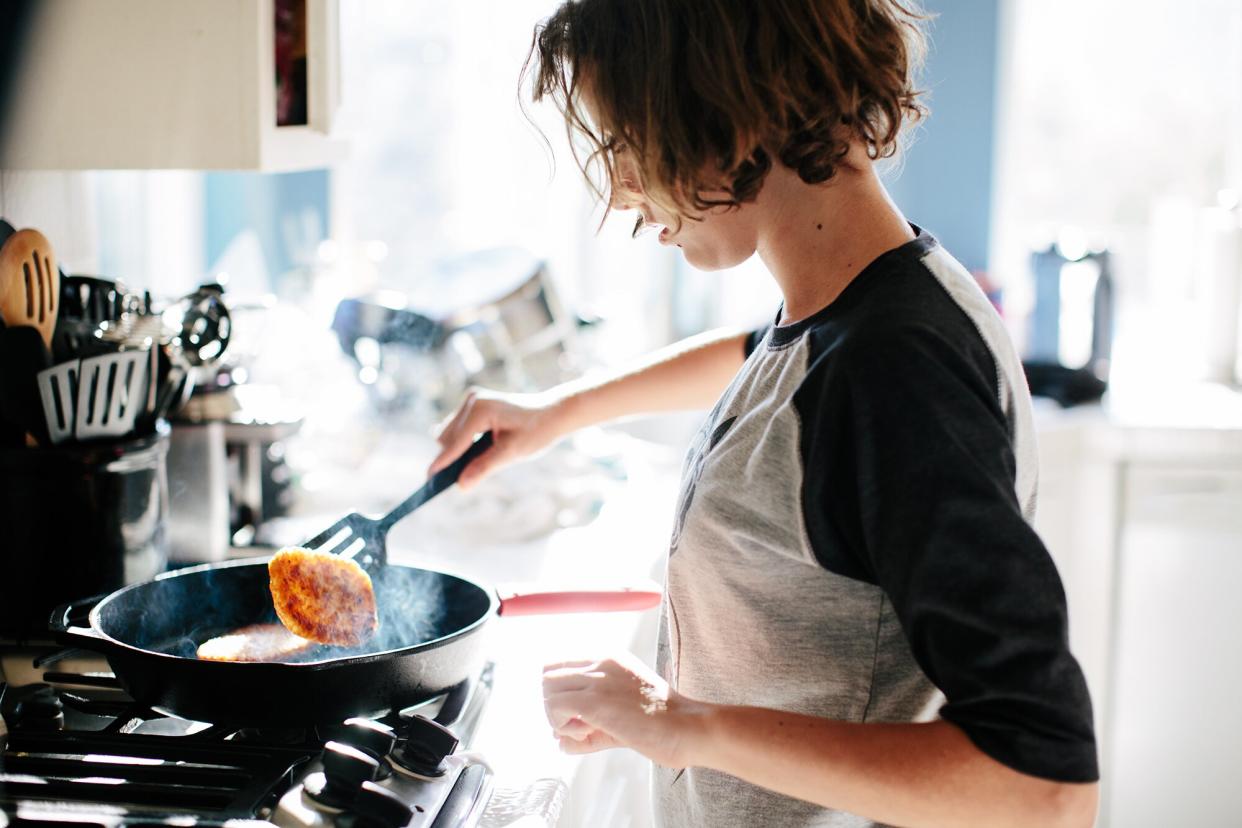3 Simple Cooking Tricks to Boost Your Iron Levels

Getty Images / Cavan Images
Did you know that iron-deficiency anemia, a common condition in which blood lacks healthy red blood cells, affects more than 1.2 billion people globally? The American Society of Hematology notes that about 3 million Americans have this condition.
You may be iron deficient if you are constantly tired, irritable, feel cold when others are not, feel dizzy, have headaches or have brittle nails and hair. If you are concerned about your iron levels, talk to your doctor. They can order a blood test to check your iron levels to see if you have anemia.
Whether you are low in iron or not, the good news is that you can increase your iron levels by eating iron-rich foods and combining easy cooking techniques with food-based strategies. Read on to learn how you can raise your body's iron levels with three simple tricks.
Related: The Best Cast-Iron Skillets, According to Our Test Kitchen
1. Cook Foods in Cast-Iron Cookware
Using cast-iron cookware is a natural and convenient way to increase the iron content in your meals. Compared to using Teflon-coated, nonstick cookware, cast-iron pots and pans may increase the iron content of the foods cooked in them by up to 16%. This durable cookware may also effectively raise the iron levels for those diagnosed with iron-deficiency anemia, particularly children.
While you may benefit from using cast-iron pans and pots, how much iron is absorbed depends on a few factors, including your age and the size and age of your cookware.
The cooking time and the type of food cooked in the cast-iron ware matters too. You may reap more iron from simmering a moist food, such as spaghetti sauce, in a cast-iron pot than from frying meat in a cast-iron pan.
Still, from a culinary standpoint, certain foods such as tomatoes and tomato-based products, wine and vinegar may not be well suited for cooking in regular cast-iron cookware. These naturally acidic foods may weaken the seasoned coating on the porous cast-iron surface, resulting in metallic flavors leaching into foods which might make the dishes less appetizing.
Nevertheless, you can still cook them in cast-iron cookware by diluting these acidic ingredients, adding them late in the recipe or shortening their cooking time.
If you love using cast-iron cookware to make your meals and do not mind the frequent maintenance, then our Healthy Recipes for Cast-Iron Skillets are perfect for boosting your iron levels, and we can also show you how to clean and season a cast-iron skillet.
2. Use a Cast-Iron Ingot
On the other hand, if you find the regular upkeep of cast-iron cookware to be a hassle, or if you're not ready to invest in a whole line of new cookware solely to raise your iron levels, then you may want to explore the use of the Lucky Iron Fish.
This fish-shaped cast-iron ingot is meant to imitate the iron-releasing mechanism from cast-iron cookware. Recent research suggests that this affordable alternative may help you absorb iron and might reverse or even help prevent iron deficiency.
However, the use of this fish-shaped cast-iron ingot remains controversial, especially for those who have genetic hemoglobin disorders, as it may be ineffective in increasing iron levels.
Additionally, children may be at most risk for iron toxicity if they eat too much food cooked in iron. More research is needed to confirm the safety and effectiveness of cast-iron cookware and ingots to boost iron levels.
3. Pair Iron-Rich Plant Foods with Vitamin C-Rich Foods
A recent study from the Journal of Nutrition notes that the rise of iron-deficiency anemia in the U.S. might be related to the lower concentration of iron in food products and a shift in American eating habits toward more plant-based eating patterns. Plant-based eating patterns can offer a lot of health benefits, like promoting weight loss and reducing cancer risk, and you can meet your iron needs in a plant-based way with a little know-how.
While plant-based proteins have iron, they contain a type called nonheme iron that is not as easily absorbed as the heme iron found in animal products. On the bright side, pairing vitamin C-rich foods with iron-rich plant foods can increase iron uptake. Our White Bean and Sun-Dried Tomato Gnocchi is a perfect example, combining nonheme iron from white beans with vitamin C-abundant tomatoes. You can also follow our anemia meal plan and get inspiration from our recipes to up your iron intake.

